Philippines as an archipelago naturally has more than a hundred distinct ethnic groups throughout the country, each with their unique traditional food staples. However, the style of food making has evolved over many centuries to a mixed cuisine of Indian, Chinese, Spanish and American influences. Despite this, Filipino food is still widely shaped by their customs, traditions and beliefs.
A notable Filipino trait is that they love their food, and food always brings people together whether it be with friends, families or colleagues. Filipinos are very religious and superstitious, with beliefs coming from their elders and ancestors. In fact, they associate food into special occasions such as birthdays, Christmas Day, New Year’s Day, etc., believing that these practices will bring good fortune to them.
Popular Filipino Foods and Meaning
Here are popular Filipino foods which you may have encountered in Filipino homes or restaurants:
Lechon
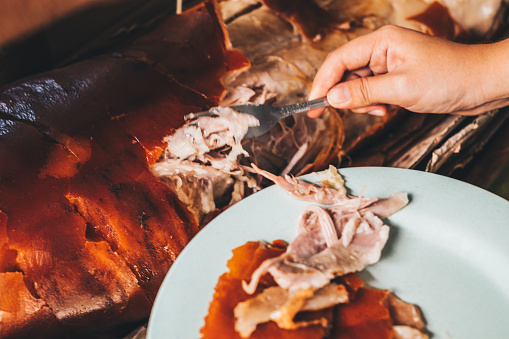
The name lechon is derived from a Spanish word for roasted suckling pig. However, Filipinos’ version of lechon is a roasted adult pig while roasted suckling pig is called lechon de leche. This is one of the most popular dishes in the Philippines where the slowly roasted pig is stuffed with lemon grass, garlic, onion and chives.
This dish symbolizes abundance and is the centerpiece in almost all celebrations such as Birthdays, Weddings, Graduations and most especially Fiestas.
Pancit
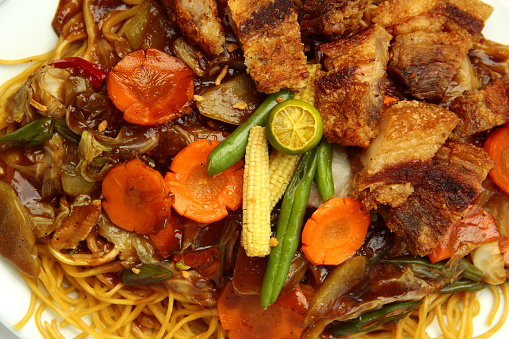
Pancit are basically noodles. Originally introduced by Chinese settlers, the name comes from Hokkien “pian e sit,” which translates to “something conveniently cooked”. It has now been fully adopted into local cuisine over the years evolving it into a Filipino signature dish. There are many variations of Pancit as different regions in the Philippines has their own version of preparing the dish. The following are the commonly known variations of the pancit dish: Pancit Canton, Pancit Bihon Guisado (Sauteed Rice Noodles), Sotanghon Guisado, Pancit Luglog, Pancit Habhab and Pancit Lomi.
Pancit is a fixture at Filipino celebrations such as Birthdays, Weddings and Baptisms which signifies long life.
Binignit or Ginataang Halo-halo
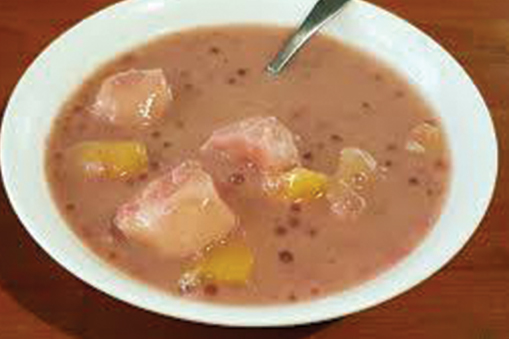
Binignit is a stew with sweet flavor filled with slices of bananas, sweet potatoes, taros, sago and glutinous rice mixed with rich coconut milk. The dish is particularly popular in Cebu or Visayas region especially during the Holy Week or Lenten season.
Traditionally, Filipinos eat this during the Holy Week because the sweet stew don’t contain any meat. Since majority of the Filipinos are Christians, they are encouraged to fast and abstain from eating meat during this season. Binignit has become the Filipinos’ comfort food during the Lenten season.
Noche Buena
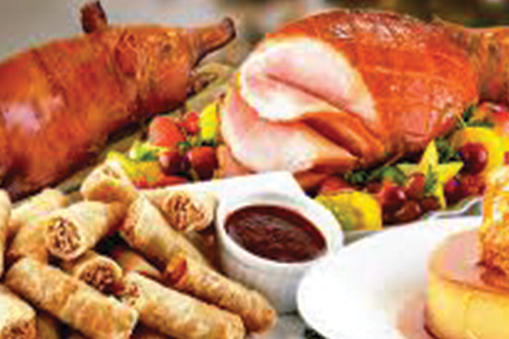
One of the most important meals of the Filipino families for the year celebrated on Christmas Day. Noche Buena is a Spanish word for good night. Filipinos celebrate the longest Christmas season in the world celebrated by both adult and children. Noche Buena is a meal shared by a family on Christmas Eve, traditionally eaten after the midnight mass. This is when all kinds of dishes can be prepared.
Most notable dishes for this occasion are the Jamon or Jamon de Bola (Christmas Ham) and Puto Bumbong. Christmas ham is traditionally given by Filipino employers to their employees as a gift. Though serving ham has its roots from the ancient Catholicism, it has become a religious sign of offering during Christmas.
Puto bumbong (purple rice cake steamed in bamboo tubes) is a staple food for Christmas season as it is especially popular during the Misa de Gallo (devotional nine-day series of Masses) or dawn mass. Church goers indulge themselves with this sweet treat right after the mass. It also signifies sweet ties among the family members.
Media Noche
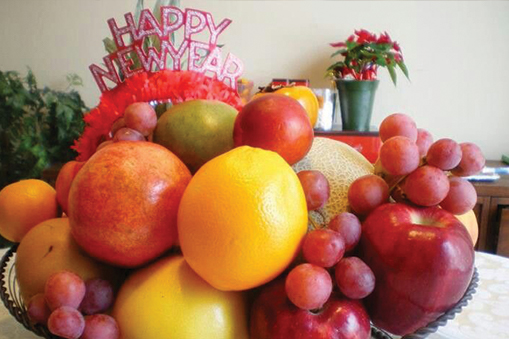
On December 31, Filipino families gather for a lavish midnight feasta, this is like a culmination of the different delicious Filipino cuisines. This is similar to the Noche Buena on Christmas Eve that lasts until the following morning. The feast can include different dishes that signifies positivity, long life, sweet ties, abundance and good luck such as lechon, pancit, chocolates and sticky sweet desserts (sticky characteristics of a dish represents a closely knit family).
However, the most popular tradition during Media Noche is the need to complete the 12 Round Fruits on the dining table. It is believed that round symbolizes gold and silver coins in the olden days which attracts good fortune and abundance all throughout the incoming year.
Most of the Filipinos avoid preparing chicken and fish during New Year’s Eve as the chicken symbolizes “isang kahig, isang tuka”, which means scratch and peck, while the fish is an animal that scrounge for food, both symbolize hardship and poverty.
Place Worth Staying, Destination Worth Going
These are just some of the many meaningful dishes of the Philippines. Filipino customs and beliefs may very well be different from around the world. But these are more than just superstitions and beliefs, these are inscribed in the Filipino culture and have helped shape different generations of Filipinos over a long period of time.
For as long as the new generation continue to respect and remember the culture of the past, the Philippines will always remain to be place worth staying and a destination worth going.
You might also wanna check Legal Advice and Services for Expats Living in PH.




